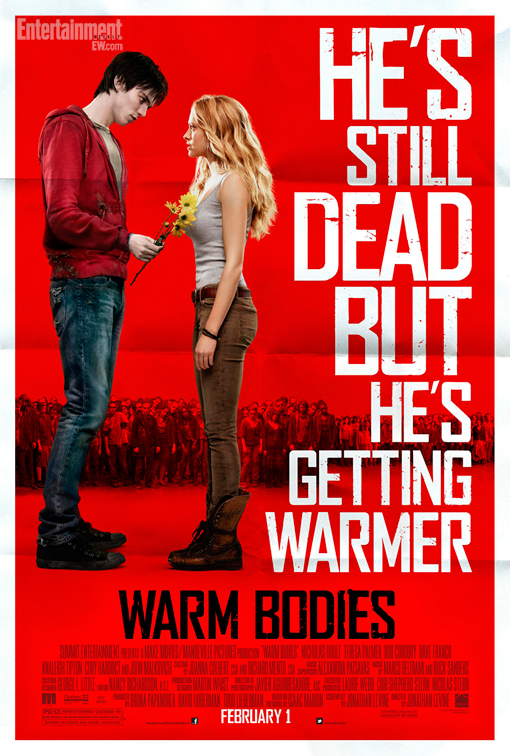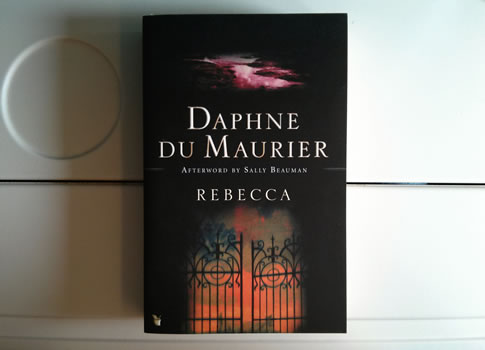
I did not think that I could finish reading Jerusalem: The Biography – a history book thick as a dictionary. But I did. All thanks to the author’s entertaining writing style in presenting the history of Jerusalem from 160 BC to present time. For majority part of the book, it reads like George R. R. Martin’s A Game of Thrones. History is so full of blood and gore, scandalous sex and money, politics and betrayal, and bribery of all sorts. It is hard to imagine that within a tiny city called Jerusalem, so many times she has fallen to different rulers, her people have been massacred for so many centuries. At times I wonder: What would God think of all these? Religions can be such a torment to our human race.
I have always been intrigued by the history of the three monotheistic religions namely Judaism, Christianity, and Islam, as well as the history of Israel and her people. I have read books written by Karen Armstrong. My immense interest to this topic perhaps leads to my UK blogger friend Jo’s personal recommendation of this book to me. Her review of Jerusalem: The Biography can be found in here. As always, her write-up is not to be missed.
Reading Montefiore’s Jerusalem, in parts, very much like reading Armstrong’s Holy War. In Karen Armstrong’s Holy War, she wrote about the crusades and their impact on today’s world. It is a book with a history encompassing the three religions stretches from 1095 AD to present time. From the historical viewpoint, these two books overlap. Armstrong tackles the topic in a much greater depth and analysis while Montefiore’s ‘page-turner’ easy-to-read approach makes it more accessible to mortal readers like me. Maybe that is the reason why I manage to finish reading Montefiore’s Jerusalem and not Armstrong’s Holy War. Now that I have a better grasp of the history of Jerusalem, I may give Holy War another go.
Montefiore divides his book into nine parts, with a prologue and an epilogue. On average, each chapter is no more than 10 pages in length. There are page-turner worthy hooks built onto each chapter that lead the readers onto the following chapters. The book starts with Judaism and Paganism that leads to Christianity and Islam – two-fifth of the book’s volume covering a time period of 160 BC to 1099. Then the Crusade, Mamluk, Ottoman, and Empire – another two-fifth of the book until the year 1905. The rest of the book is devoted to Zionism.
The challenge of reading a history book – to me – is that it is hard to relate to a character born and died so many years ago. I may have a mental recollection of what Yasser Arafat or Ariel Sharon’s behavior like. But not for most of the pivoted figures in the history of Jerusalem. To that extend, Montefiore has done a meticulous job in supplying the readers a physical description of a character if possible – from paintings or literature – as well as juicy gossips from the past. On top of that, the author often adds his share of opinions especially when he speculates that the written history or documentations may have been distorted or exaggerated.
Here lies the challenge. Shall we – the readers – take in all that the author writes and accept this book as the biography of Jerusalem? Should a biography be challenged, especially when it touches onto the materials from the Holy Books such as The Bible?
My background is only limited to Christianity. The following excerpt intrigues me.
Pilate toyed with releasing one of these prisoners. Some of the crowd called for Barabbas. According to the Gospels, Barabbas was released. The story sounds unlikely: the Romans usually executed murderous rebels. Jesus was sentenced to crucifixion while, according to Matthew, Pilate ‘took water and washed his hands before the multitude, saying, I am innocent of the blood of this just person’.
‘His blood be upon us and our children,’ replied the crowd.
Far from being a mealy-mouthed vacillator, the violent and obstinate Pilate had never previously felt the need to wash his hands before his blood-letting.
I am unsure if my friends of the Islam faith would too find similar debates within the book. Fortunately, I am pretty open-minded about my religion. I read some of these debates as alternative views with only slight discomfort at times. All in all, Montefiore has stayed out of many sensitive topics such as the resurrection of Jesus with a simple sentence: For those who do not share this faith, the facts are impossible to verify.
The last part of the book – Zionism – that takes up one-fifth of the book’s volume is pretty dry to read. A similar dryness that prompted me to stop reading Karen Armstrong’s Holy War. It appears to me that as we have more means to record history, history becomes less colorful. Or perhaps, the way of life in the past is always intriguing to look at while modern day history is more like the current affair that we read everyday.
Entertainment value aside, Jerusalem has depicted a complex background that opens up my eyes. I enjoy reading the epilogue’s This Morning the most. It is a vivid recount of how each of the three monotheistic religions start the day in Jerusalem. The rabbi and the Wall, Nusseibeh and the opening of the Church of the Holy Sepulchre, Ansari and the gates of the Haram, and Qazaz and al-Aqsa. It is this complex heritage that shapes Jerusalem – and by and large the world – today. If there is one thing that I have learned from the history of this Holy City, there will be no peace till the end of time and our religious beliefs will continue to fragment drawing out more conflicts as our civilization progresses. The fact that Jerusalem is a physical location with historical sites shared by the three monotheistic religions (as well as the sects fragmented within) forces us to come face-to-face with this seemingly impossible task of reconciliation.
It is now one hour before dawn on a day in Jerusalem. The Dome of the Rock is open: Muslims are praying. The Wall is always open: the Jews are praying. The Church of the Holy Sepulchre is open: the Christians are praying in several languages. The sun is rising over Jerusalem, its rays marking the light Herodian stones of the Wall almost snowy – just as Josephus described it two thousand years ago – and then catching the glorious gold of the Dome of the Rock that glints back at the sun. The divine esplanade where Heaven and Earth meet, where God meets man, is still in a realm beyond human cartography. Only the rays of the sun can do it and finally the light falls on the most exquisite and mysterious edifice in Jerusalem. Bathing in glowing in the sunlight, it earns it auric name. But The Gold Gate remains locked, until the coming of the Last Days.
Publisher: Vintage
ISBN-10: 0307280500
ISBN-13: 978-0307280503
* * * * *
The following excerpts have left a strong impression to me and I wish to share them with you here. Maybe too much Shakespeare I have read in the past. Also, these excerpts I hope can illustrate the writing style of the author.
The first excerpt is a colorful prelude of Antony and Cleopatra and the war for the world.
The Egyptian queen progressed home to Alexandria. There Antony, in a spectacular ceremony, raised Cleopatra to ‘Queen of Kings’. Caesarion, her son by Caesar, now thirteen years old, became her co-pharaoh, while her three children by Antony became kings of Armenia, Phoenicia and Cyrene. In Rome, this Oriental posing appeared unRoman, unmanly and unwise. Antony tried to justify his Eastern wassails by writing his only known work of literature titled ‘On His Drinking’ – and he wrote to Octavian, ‘Why have you changed? Is it because I’m screwing the queen? Does it really matter where or in whom you dip your wike?’ But it did matter. Cleopatra was seen as fatale monstrum. Octavian was becoming ever stronger as their partnership fell apart. In 32 BC, the Senate revoked Antony’s imperium. Next Octavian declared war on Cleopatra. The two sides met in Greece: Antony and Cleopatra mustered his army and her Egyptian-Phoenician fleet. It was a war for the world.
The second excerpt recounts the clever politics played by Herod and it has an artistic touch to Antony and Cleopatra’s demises.
Herod again prepared for death, leaving his brother Pheroras in charge and, just to be safe, having old Hyrcanus strangled. He placed his mother and sister in Masada while Mariamme [his wife] and Alexandra [his wife’s mother] were kept in Alexandrium, another mountain fortress. If anything happened to him, he again ordered that Mariamme was to die. Then he sailed for the most important meeting of his life.
Octavian received him in Rhodes. Herod handled the meeting shrewdly and frankly. He humbly laid his diadem crown at Octavian’s feet. Then instead of disowning Antony, he asked Octavian not to consider whose friend he had been but ‘what sort of friend I am’. Octavian restored his crown. Herod returned to Jerusalem in triumph, then followed Octavian down to Egypt, arriving in Alexandria just after Antony and Cleopatra had committed suicide, he by blade, she by asp.
The third excerpt Justinian and the Showgirl Empress introduces Theodora, queen to the last Latin-speaking emperor of the east.
[Justinian] did not come to power alone: his mistress Theodora was the daughter of the Blue chariot-racing team’s bear-trainer, raised among the sweaty charioteers, louche bathhouses and bloody bearpits of the Constantinople hippodrome. Starting as a pre-pubescent burlesque showgirl, she was said to be a gymnastically gifted orgiast whose specialty was to offer all three orifices to her clients simultaneously. Her nympho-maniacal party piece was to spread-eagle herself on stage while geese pecked grains of barley from ‘the calyx of this passion flower’. The sexual details were no doubt exaggerated by their court historian, who must secretly have resented the sycophancy of his day job. Whatever the truth, Justinian found her life-force irresistible and changed the law so that he could marry her.
The last excerpt illustrates one of the many bloody conflicts we have seen in the history of time. Key words are ‘lamb stew’ and ‘hot dry air’.
Abu al-Abbas declared himself caliph and invited the Umayyads to a banquet to declare his peaceful intentions. In the midst of the feast, the waiters drew out clubs and swords and butchered the entire family, tossing the bodies into the lamb stew. The Slaughterer himself died soon afterwards but his brother Mansur, the Victorious, systematically murdered the Alid family and then liquidated the overmighty Abu Muslim too. His perfumier, Jamra, later told how Mansur kept the keys of a secret storeroom which was to be open only on his death. There his son later found a vaulted chamber filled with the bodies, each meticulously labelled, of the family of Ali from old men to infants, whom Mansur had killed, all preserved in the hot dry air.











